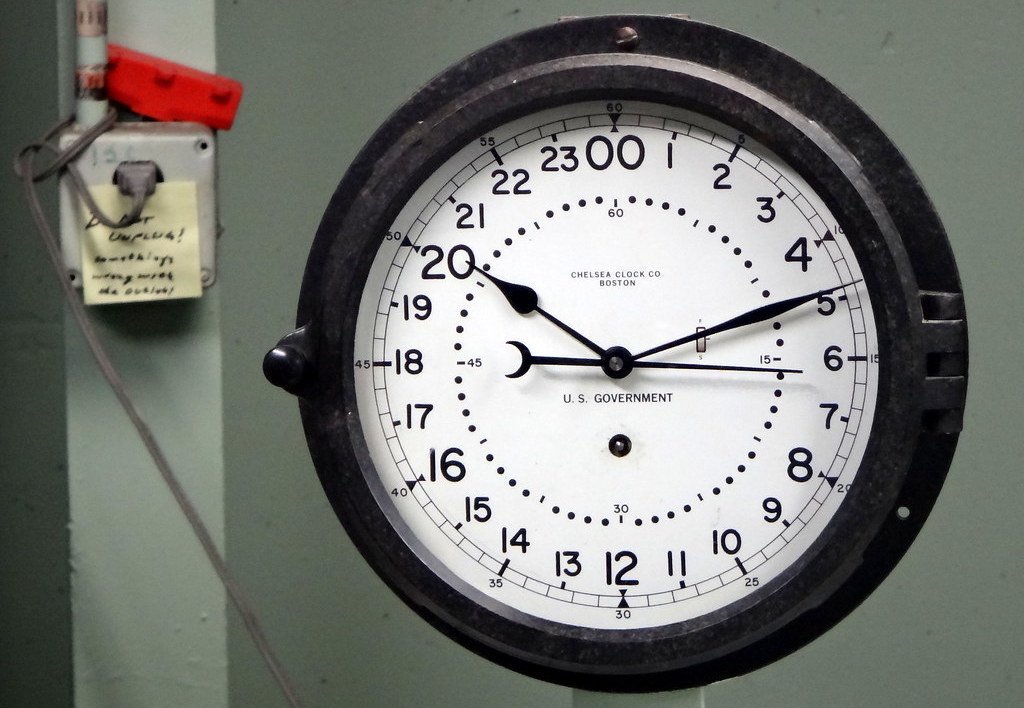
Open Daily 10am - 5pm
12,000sq.ft. of amazing items!
Free and easy parking!

First, an admission. I’m a clock guy. Not the quartz or battery powered clocks that increasingly populate our desks and walls but those filled with steel and brass and gears and oil. Their precision amazes me and the metronomic ticking of a mechanical clock is truly the heartbeat of a home. And not just terra firma homes either. Marine clocks provide critical information to those serving aboard ships at sea and have done so for more than 100 years. Such clocks must be highly accurate, extra sturdy, and well sealed to avoid the corrosive effects of salted air. If there is one maker of ship’s clocks that stands above the rest, it is surely Chelsea.
While the name Chelsea dates to 1897, the firm actually began in 1884 as the Boston Clock Company. There were a few names changes in the intervening years but its founding was propitious. As the era of sail was giving way to steam, the need for accurate and reliable maritime timekeeping was on the rise. By 1905, and with the help of the Spanish-American war and planning for Teddy Roosevelt’s Great White Fleet, Chelsea had established itself nationwide as a premium supplier of ship’s clocks.
As the 20th century got underway, the firm began to spread its wings, landing a contract in 1903 with Rolls Royce to provide dashboard clocks for its up-and-coming motorcars. Nonetheless, Chelsea’s focus on marine clocks remained and in 1911 it filed a patent for a ship’s bell clock that was to become a firm touchstone. Work periods aboard ships have long been divided into six four-hour “watches”: First Watch, Mid-Watch, Morning Watch, Forenoon Watch, Afternoon Watch, and Evening Watch. Sailors generally stand two watches per day with eight hours off in between. Prior to Chelsea’s innovation, a watch officer would manually strike a bell every half-hour throughout each watch to mark its progression, beginning with one bell after the first half-hour and adding an additional bell for every 30 minute thereafter. Chelsea’s automation of this process brought consistency and safety to this most vital of shipboard functions.
The firm remained an innovator throughout the 20th century, spurred on by massive increases in demand during conflicts involving ships at sea. Its first electric clock was introduced in 1930, followed by airplane clocks four years later. In 1936, Admiral Byrd extended his thanks for the Chelsea clocks that accompanied him on his legendary expedition to the South Pole. During WWII, Chelsea’s clock production soared as virtually every vessel afloat carried an array of timekeeping devices. As brass disappeared into ammunition plants, Chelsea replaced its traditional brass housings with black phenolic ones, many of which are still in use today.
Now in the 21st century, Chelsea continues to chug along even as the demand for traditional analog timepieces has faded. Its lineup includes desktop, mantle, wall, and tide clocks, plus a range of barometers. While a few promotional models are powered by quartz movements, most still utilize the mechanical movements of yore. As you would expect from a clockmaker whose products have long been a White House staple, their premium models are not inexpensive but prices have recently come down as the market continues to soften.
Chelsea has also embraced its heritage by dealing in its own antique and vintage timepieces, refurbishing them at its servicing facility and putting them up for sale. Apart from its own clocks, Chelsea will repair those from other makers as well, a service that is increasingly hard to find.
If you’re looking for American-made quality and history in your next timepiece, you can do no better than Chelsea. They are widely available online and from a range of brick-and-mortar dealers like ours. Chelsea collectors groups are worldwide and can provide a wealth of information about any given model. Parts and repairs can be costly, however, so look for clocks that are running and keeping time. Like me, you’ll come to find that a house is not a home without a ticking clock somewhere inside.





We’ll email you about the latest events, sales, and general store updates.

Our antique gallery is located just south of downtown Palm Springs, with free parking and air conditioning throughout.
Open Daily: 10am – 5pm
505 E Industrial Pl.
Palm Springs, CA 92264
© Copyright Antique Galleries of Palm Springs 2024